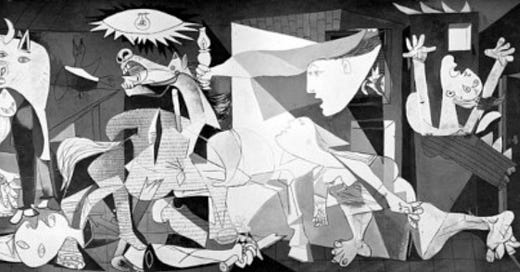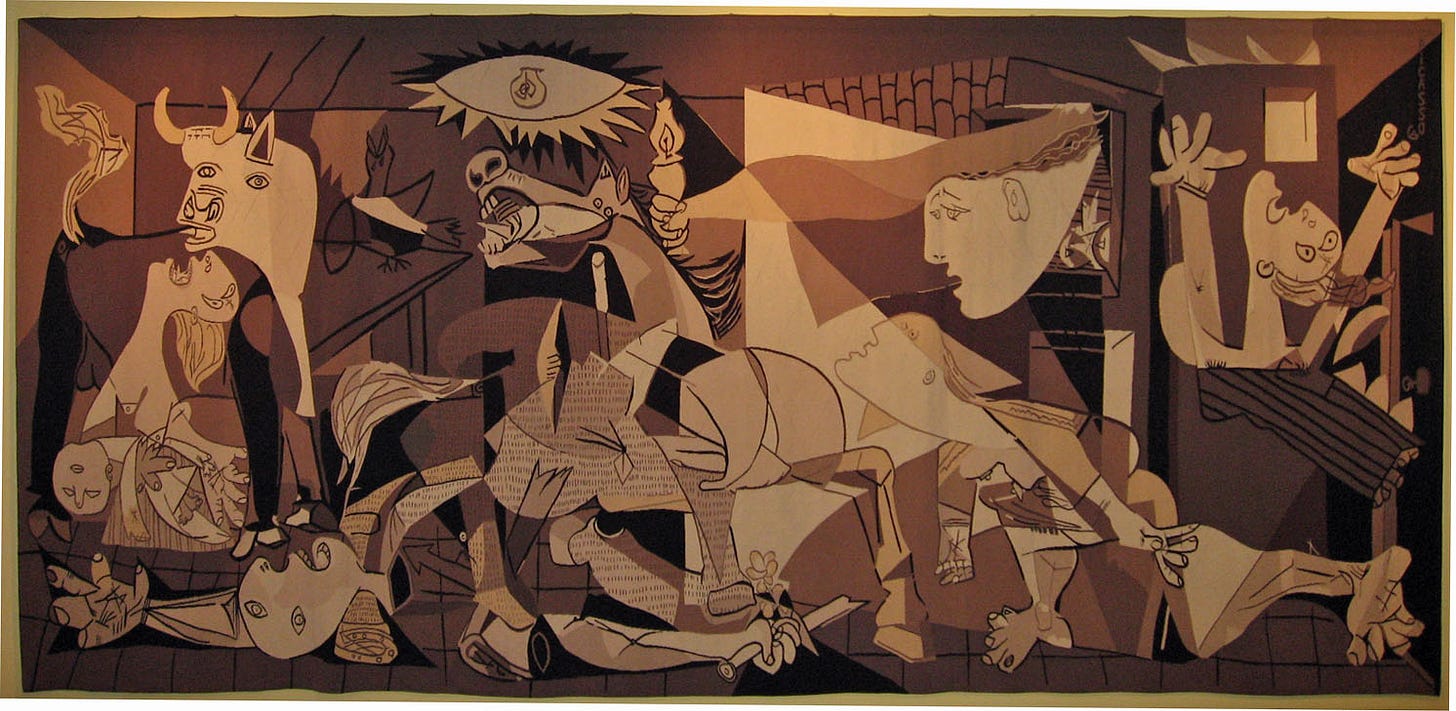There’s an interesting historical anecdote that is often told about this painting. One day, while Picasso was living in occupied Paris, a member of the Gestapo barged into his atelier. Upon seeing a photographic reproduction of “Guernica”, the Gestapo says, “Did you do this?”. To which Picasso is to have replied, “no, you did!”1
It’s likely you’ve seen this painting before. It depicts the horrific bombing of the village Guernica, in Spain’s Basque Country. The attack, led by German and Italian fascists, took place in 1937 upon an unsuspecting civilian population. It was later discovered that the bombings was planned by Nazi minister Hermann Göring as a gift for Hitler’s Birthday.2
Originally commissioned by the Spanish government, Picasso worked on the painting during his time in Paris. He was horrified by the eyewitness accounts published in the New York Times, and decided to focus the painting on the suffering of the innocent population. The combination of Picasso’s experimental cubist style with either graphic depiction of mass casualties, a distorted mass of flesh and bone, makes it one of the most harrowing indictments of what the British historian Eric Hobsbawm would later call “the age of extremes.”
Today many people associate the painting with its very famous copy, the one hanging in the United Nations headquarters in New York City.
The life-size copy was originally commissioned in 1955, by the American tycoon Norman Rockefeller. Picasso personally supervised the tapestry, but it is credited to the artist J. de la Baume-Durrbach. In 1985 Rockefeller’s wife loaned it to the United Nations where it still hangs today. It was infamously covered up when former US Secretary of State Colin Powell’s made a public address at the U.N. urging the world to go to war with Iraq, a war now widely condemned. Then again, when Picasso agreed to let the painting be hung in the MoMA (in 1956), he did say, “It will do the most good in America.”3
Today the painting stands as a chilling and stark reminder of the horrors of war. But from an artistic perspective it is also a striking example of Picasso’s cubist phase, and his enduring contribution to (American) modernism and surrealism.
Julian
Thank you for reading my Fine Art newsletter. My dream is to make learning about Fine Art easy and accessible for anyone. This blog is free, but if this post was valuable to you please consider becoming a paying subscriber at whatever amount you see fit. Thank you so much.
See “In praise of…Guernica” (the Guardian) https://www.theguardian.com/commentisfree/2009/mar/26/pablo-picasso-guernica-spain-war
See New York review of books, “A different Guernica”, by John Richardson.
Hidden Treasures: What’s so controversial about Picasso’s Guernica, by David Cohen https://slate.com/news-and-politics/2003/02/what-s-behind-the-u-n-cover-up-of-picasso-s-guernica.html






I am currently reading 'The Courage to Create' by Rollo May, wherein he have this painting as an example, making his point about artists' art being inseparable to one's world. Meaning, he believed that genuine artists are so bound up with their age that they cannot communicate separated from it.
https://open.substack.com/pub/reshrealdeals/p/re-arts-and-the-mundanity-of-our?r=377b5z&utm_campaign=post&utm_medium=web
One of my favorites